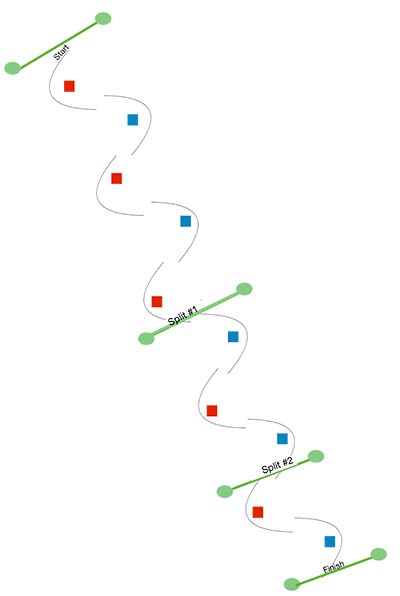
Coach’s Blog by Brandon Dyksterhouse, former Head Coach US Women’s Ski Team
“Investing in technique lays the foundation for continued growth”
While there are many factors that determine if an athlete has the ‘goods’ to make it to the top, there is no denying that improving technique is the most effective use of time and energy.
Even at the highest level in world-cup skiing, it is clear that this sport doesn’t have a ‘one-size-fits-all’ model for success. There are nuances in movement patterns, body type, strength/flexibility and more from one person to the next. Even among the world’s elite, this is an individual sport and coaching must be individualized to achieve results.
Here are two easy to implement scenarios in which protern.io allows both coach and athlete to immediately identify how modifying technique can result in faster skiing.
Scenario A: Athlete aggressively moves into tuck (aerodynamic position) at the cost of sliding turns.
I’ve long thought that if a coach could properly teach an athlete how to move into and out of low/high tuck there would be additional speed to be gained.
Unfortunately, when athletes are learning this skill set they tend to move from a engaged/balanced position (flexed joints, muscle tension, deliberate weight on the outside ski) to a disengaged, two-footed flop that leads to a momentary loss of connection and even a loss of speed. As a coach, it has always been hard to quantify and as an athlete you automatically assume that lower is better.
Thankfully with protern.io you can now gauge real-time changes in movement patterns based on time and speed.
How to measure:
- Set a 10 gate course on moderate terrain and have your athletes perform the following.
- Build a quantriq with two splits in the middle of the course to capture data.
Run #1: Ski upright (normal GS technique)
Run #2: Ski first 5 gates same as run #1 and then move into low tuck for the remainder of the course
Run #3-5: Take feedback from run #1 & #2 and perform variations of half-high tuck, one arm in front, both arms in front.

Feedback questions
- What is my entry speed for section Split#1 - Split#2 and Split#2 - Finish?
- What is my exit speed at for section Split#1 - Split#2 and Split#2 - Finish?
- What is my average speed for each section?
- How do changes in movement/positioning impact total time and splits?
With access to modern sports timing tools (i.e. protern.io) we are now able to chunk the data and pull out valuable insights that help expedite learning. While some athletes have great hip flexibility and are able to maintain glut activation in a more aerodynamic position, other athletes may lose muscle control and precision on the snow resulting in a slower outcome.
Scenario B: Athlete is told that they need to ‘work’ the flats more.
Every athlete has heard this feedback at some point during their career. What exactly does it mean and how can an athlete implement it for positive change?
When they are told they need to work the flats, most athletes put more energy into trying to bend the ski. This can be achieved in many ways: more ankle flexion, vertical movement with centre of mass, arm-swing, skating and more. While all of these movement patterns have their place, they don’t always translate into faster times.
How to measure:
Start on moderate terrain and be systematic in how you move through different runs described below.
Build a quantriq with a split in the middle of the course to capture data on how changes in movement patterns influence time and speed.
Run #1: Ski upright (normal GS technique)
Run #2: Ski first 5 gates same as run #1 and then have athlete add exaggerated ankle flexion (increasing fore-aft) movement.
Run #3-5: Implement different movement patterns (vertical movement, arm-swing, skating) and compare data from middle split and finish to determine best approach for your athlete.
In most cases, a combination of the various movements will prove to be fastest. Understanding what works and when (hard snow vs. soft snow, steep vs. flat terrain) will give your skiing greater flexibility, resulting in success over a range of environments.
With protern.io, athletes and coaches can gain the competitive advantage through data and leave the guess work to their competitors.
Contact us today to learn how Protern.io can make you a better coach.



